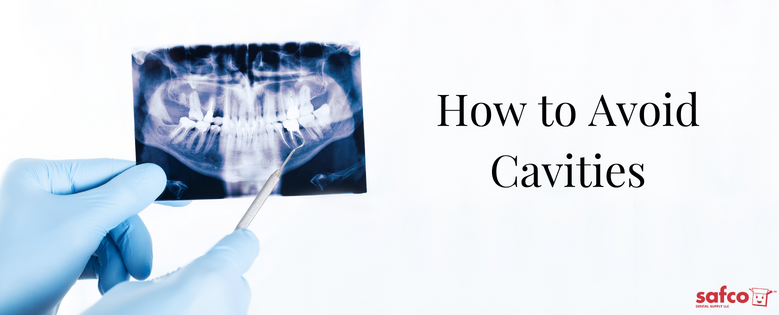
How to Avoid Cavities After the Holidays
The holidays are fun and exciting for children, but it can be a bit nerve-wracking for adults. If you’re worried about cavities following the candy-crazed holidays, you’re not alone! Let’s break down some of the top tips from dentists to help your child avoid tooth decay after Halloween.
Avoid Sticky Candies
Sticky candies are widely regarded as some of the most harmful types of candy. Some examples of popular sticky candies include caramel, gummies, and taffy.
These types of candies stick to the surfaces and become trapped in the teeth. This leads to long-term sugar exposure – and consequently, tooth decay.
The protective outer layer of the tooth is known as the enamel. The enamel protects the more delicate and sensitive inner layers of the tooth. It ultimately ensures that the teeth are not affected by damage or decay.
Sugary foods and beverages are typically one of the leading causes of tooth decay.
The mouth is home to bacteria kept under control with proper brushing and flossing.
When sugar remains on the teeth for extended periods of time, bacterial growth occurs. This creates an acidic environment inside the mouth. Bacteria and acids begin to eat away at the tooth enamel, weakening it and eventually leading to decay (cavities).
Sticky candies can also be dangerous for fillings, crowns, or bridges. They have been known to completely dislodge existing restorations. Losing a restoration means an emergency trip to the dentist. This can be inconvenient or nerve-wracking for some!
Don’t Eat Candy Throughout the Day
With an excess of candy in the house, it may be tempting to snack on candy throughout the day. This is perhaps one of the worst things you can do for your teeth!
Eating candy throughout the day creates constant exposure to harmful sugars. As discussed, this creates a harmful oral environment that wreaks havoc on the teeth.
Rather than reaching for a sweet snack throughout the day, enjoy your candy in one sitting. Preferably, after a meal and right before brushing. Enjoying a glass of water with your candy can help wash harmful sugars and acids from the mouth, as well.
Establish a Healthy Oral Care Routine
Brushing and flossing right after eating candy is the best way to ensure prevent tooth decay. These practices prevent harmful sugars and acids from resting on the teeth. But maintaining proper oral care doesn’t stop there!
Brushing
Brushing the surfaces of the teeth is the best way to rid them of harmful plaque. Plaque is a sticky bacterial film that leads to decay.
To practice proper brushing habits, be sure to brush twice each day for a minimum of two minutes. During these two minutes, hold your brush at a 45-degree angle. Strive to clean all surfaces of the teeth in both the front and back of the mouth. Don’t forget to brush your tongue, too!
Even if your child has protective sealants on their teeth, they still need to care for their oral health. It can sometimes be difficult to get little ones on board with thorough brushing at first.
Below are some ways to get kids to brush their teeth for two minutes:
- Set a timer
- Sing “Happy Birthday” twice while brushing
- Let your child choose their favorite two-minute song. Let them know that brushing stops when the song ends
- Use positive reinforcements
- Let your child choose a fun kids toothbrush that gets them excited about brushing
- Let your child choose kids toothpaste that is effective and fun
- Ask your child’s dentist to demonstrate the importance of brushing
Flossing
Flossing is an aspect of oral health that is just as important (if not more) as brushing.
Flossing helps remove food particles and plaque trapped between the teeth.This reduces the risk of cavities and gum disease.
It’s best to floss at least once per day, but it is highly recommended to floss each time you brush. This keeps the teeth and gums as healthy as possible in-between cleaning appointments.
In order to floss the teeth, take a section of floss and wrap both ends around your two index fingers. Bring the floss between two of your teeth and drag it up (or down) toward the gums. Move the floss back and forth and against the teeth in a “C” shape. Dislodge any debris or plaque before pulling it out and moving to the next two teeth.
If you feel that you could use a lesson in flossing your teeth, don’t be afraid to ask your dentist.
For the little ones, brightly-colored kids flossers are excellent. They offer a fun way to get them started on their oral care journey and avoid cavities.
Mouthwash
Mouthwash should be used after brushing and flossing. It helps rid the mouth of any remaining debris or bacteria.
Rinsing your mouth with an ADA-approved mouthwash helps avoid cavities, gingivitis, and bad breath. Simply swish with mouthwash for a minimum of 30 seconds before spitting it out into the sink.
Mouthwash is not typically recommended for children under the age of six. Until your child is able to understand that they can not swallow mouthwash, it is best to avoid it as a whole.
When your child is ready, allow them to choose a kids mouthwash. Fun colors and flavors to help them get excited about rinsing their mouth!
Supplies You Need to Keep Your Pediatric Patients Cavity-Free
High-quality dental products are the basis of proper oral care. Safco Dental Supply is proud to offer a wide range of pediatric dental supplies.
For more information about our products, feel free to give us a call at 800.621.2178. Our customer service representatives will be happy to help you start your order!